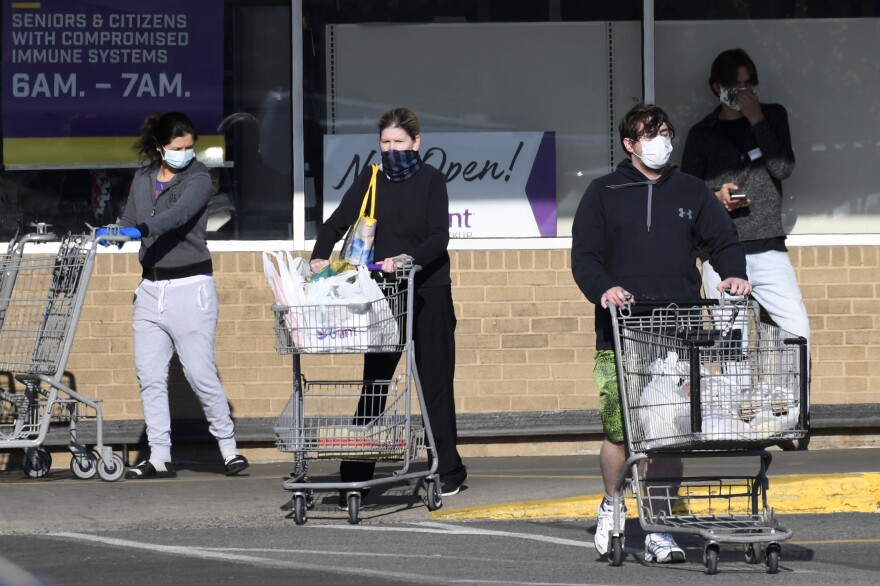Baltimore Mayor Jack Young issued executive orders Wednesday that suspend indoor dining services and require residents to wear masks whenever they leave their homes and cannot engage in social distancing. They take effect at 5 p.m. Friday.
Since Baltimore entered its phase 2 of reopening just over a month ago, the city has seen a near-double increase in new coronavirus cases, a dramatic rise of cases in people under the age of 40 and a disproportionately high positivity rate in southeast neighborhoods like Canton and Patterson Park.
"I have always stressed that my administration would continuously monitor the data related to COVID-19, and that I would not hesitate to tighten restrictions if the data indicated we should,” Young, a Democrat, said during a news conference.
Young is one of several local leaders forging ahead with new local measures and advocating for Gov. Larry Hogan to order expanded statewide restrictions as hospitalizations and deaths creep upward throughout Maryland.
“We anticipated that reopening would come with an increase in cases, but all the data trends combined raises our level of concern and requires a re-evaluation of the openings allowed under Phase 2,” said city health commissioner Dr. Letitia Dzirasa.
Under the orders, all residents over age 2 must wear face coverings whenever they are in public and maintaining a social distance of at least six feet is not possible.
Beginning Friday, restaurants and bars must suspend indoor dining operations for at least two weeks. They may continue with socially distanced outdoor dining and carryout and delivery services. Face coverings are not required while seated outdoors at a food service establishment.
“These decisions were not easy, nor were they made to punish a particular industry," Dzirasa said. "Instead, these decisions are rooted in current data and trends being seen in COVID-19 cases in Baltimore City and information about the transmission of the novel coronavirus.”
She said the city took into account several data points in the decision to shut down indoor dining, including a number of bars and restaurants that recently closed after slews of employees tested positive.
Dzirasa said the city has increased local testing capacity and now performs over 2,000 tests daily, but that the number of new cases are increasing at a rate higher than anticipated for multiple days in a row.
While city fatalities have not dramatically increased, they have not decreased either.
“Fatalities or deaths as a result of COVID-19 are usually a lagging indicator of a spike in new cases, and it might not increase until weeks after a spike of positive cases has been identified,” Dzirasa said.
Baltimore transitioned into phase 2 reopening just over a month ago. Two weeks after reopening, on July 4, the city recorded an average of 63.4 cases a day. One week later, on July 12, the average daily case count had almost doubled to 109.
Since then, a different profile of the average coronavirus patient in Baltimore has emerged, Dzirasa said. While new coronavirus patients skewed older at the pandemic’s beginning, the median age of new patients is now 35, while the highest incidence rates of new cases and the highest test positivity rates are now in Baltimoreans between the age of 20 and 39.
Certain ZIP codes, specifically the 21224 which includes neighborhoods like Canton, Highlandtown, and Patterson Park, have seen cumulative positivity rates as high as 22% among city residents, Dzirasa said.
“We are in this pandemic for the foreseeable future and will have to make tough decisions in order to protect our community, and our most vulnerable,” she said.
The health commissioner emphasized that social distancing and masks remain effective methods of reducing the chances of disease transmission.
“You, right now, could possibly be infected with the coronavirus, and not have any symptoms,” Dzirasa said. “If you are still choosing not to wear a face cloth covering, you are directly endangering the lives of your friends, your family, your co-workers, or others you may come across while out.”
It may be hot, she said, but bringing several face coverings with you while outside so that you can replace them if you sweat is worthwhile.






